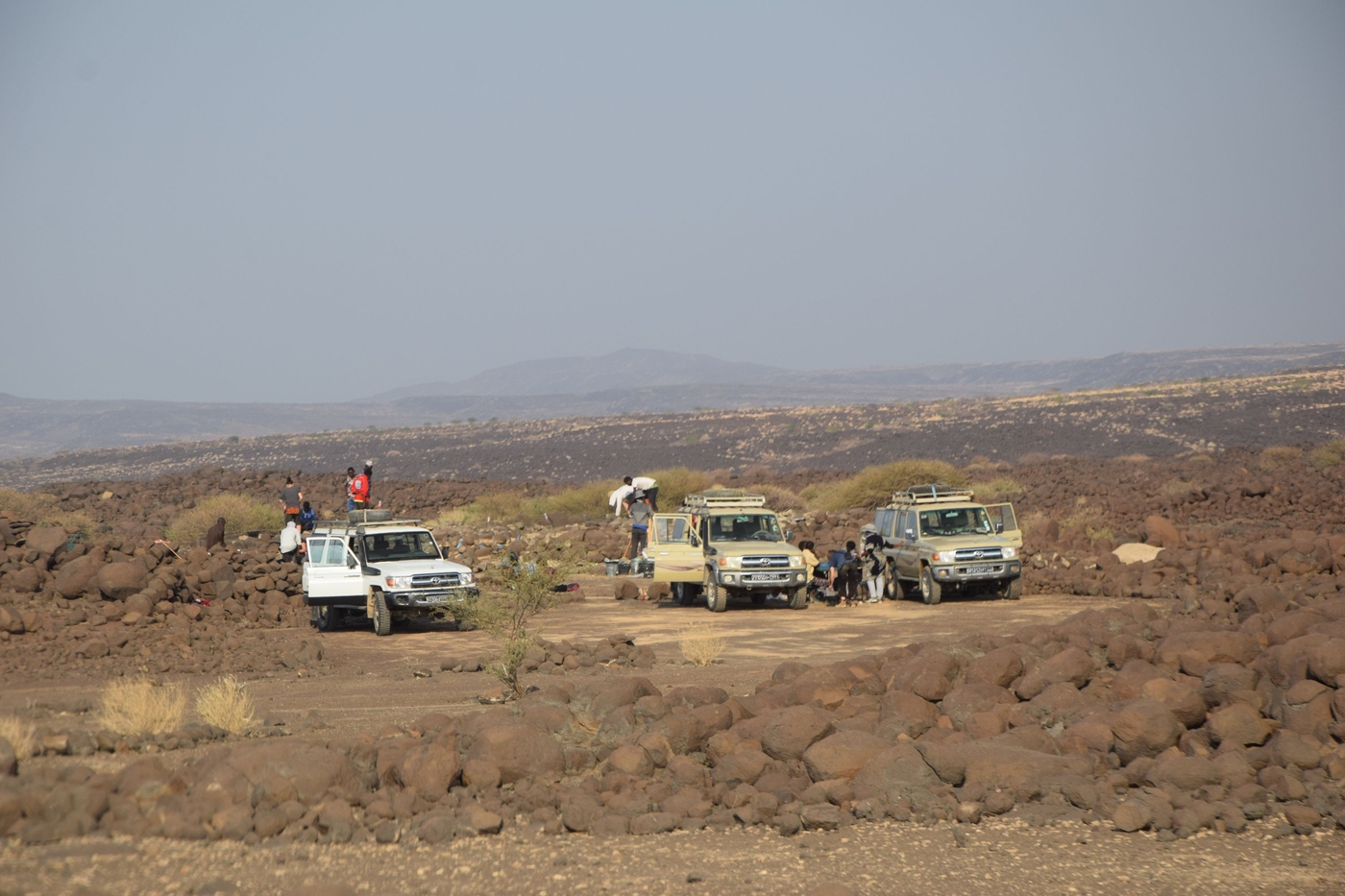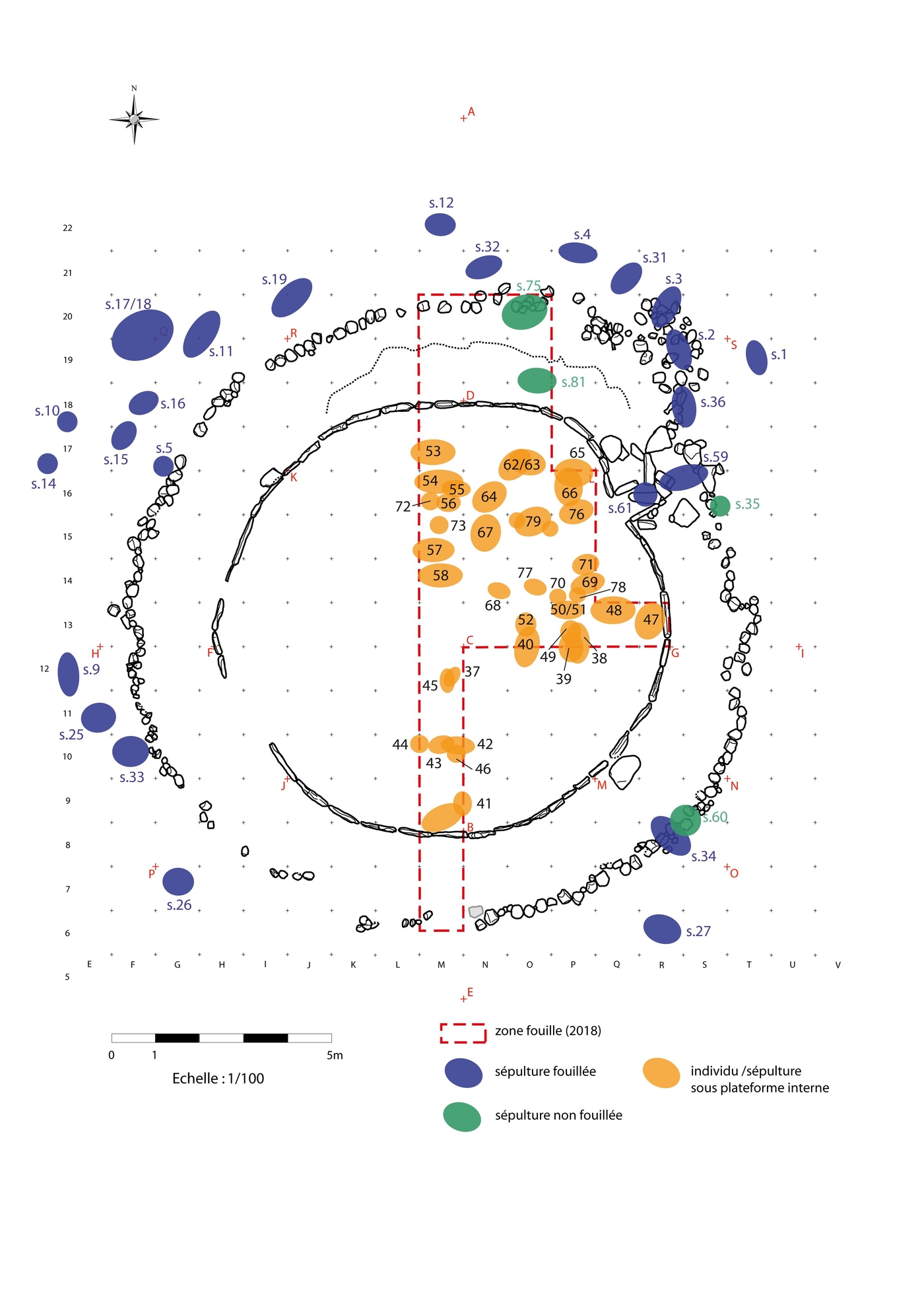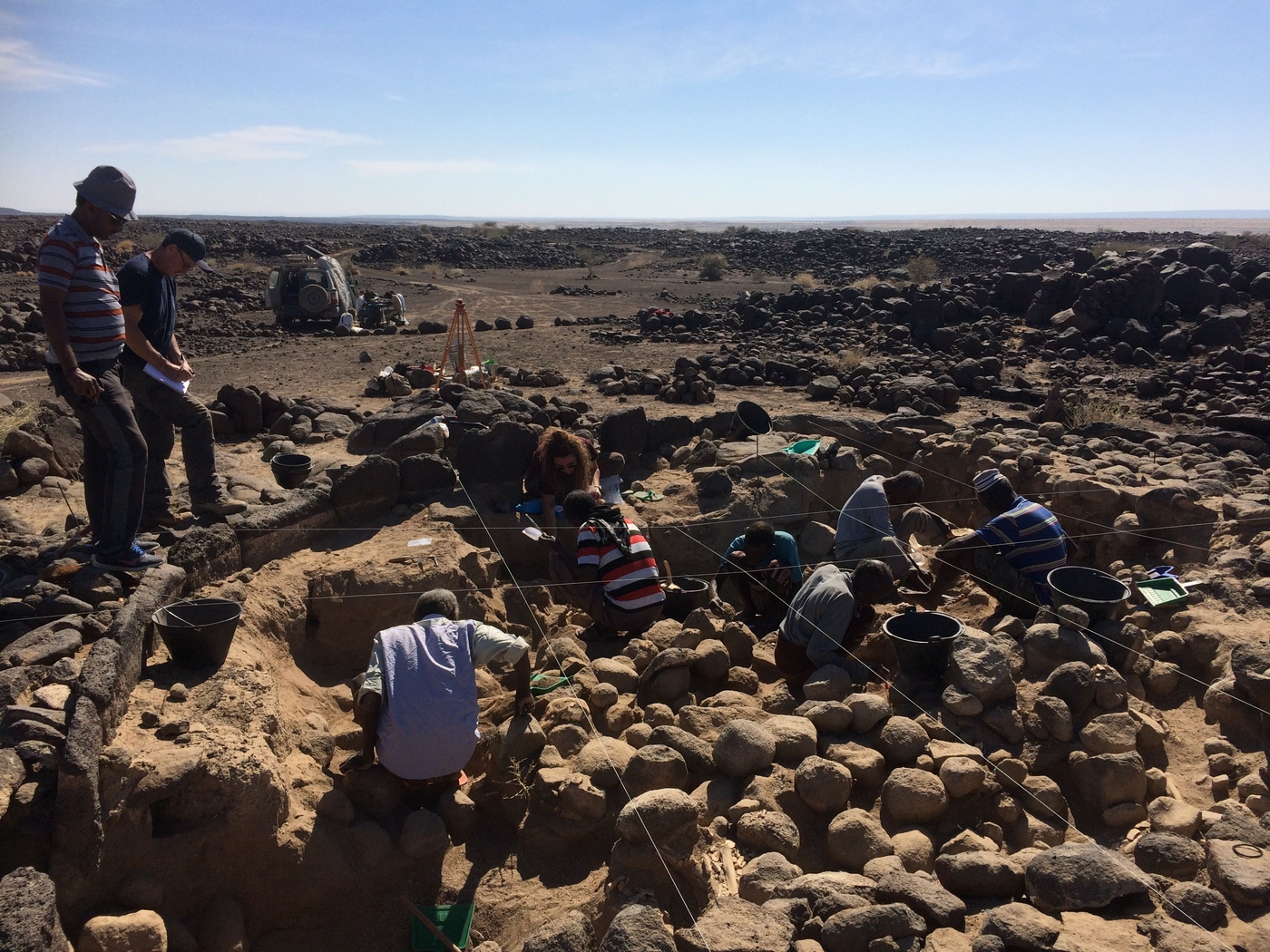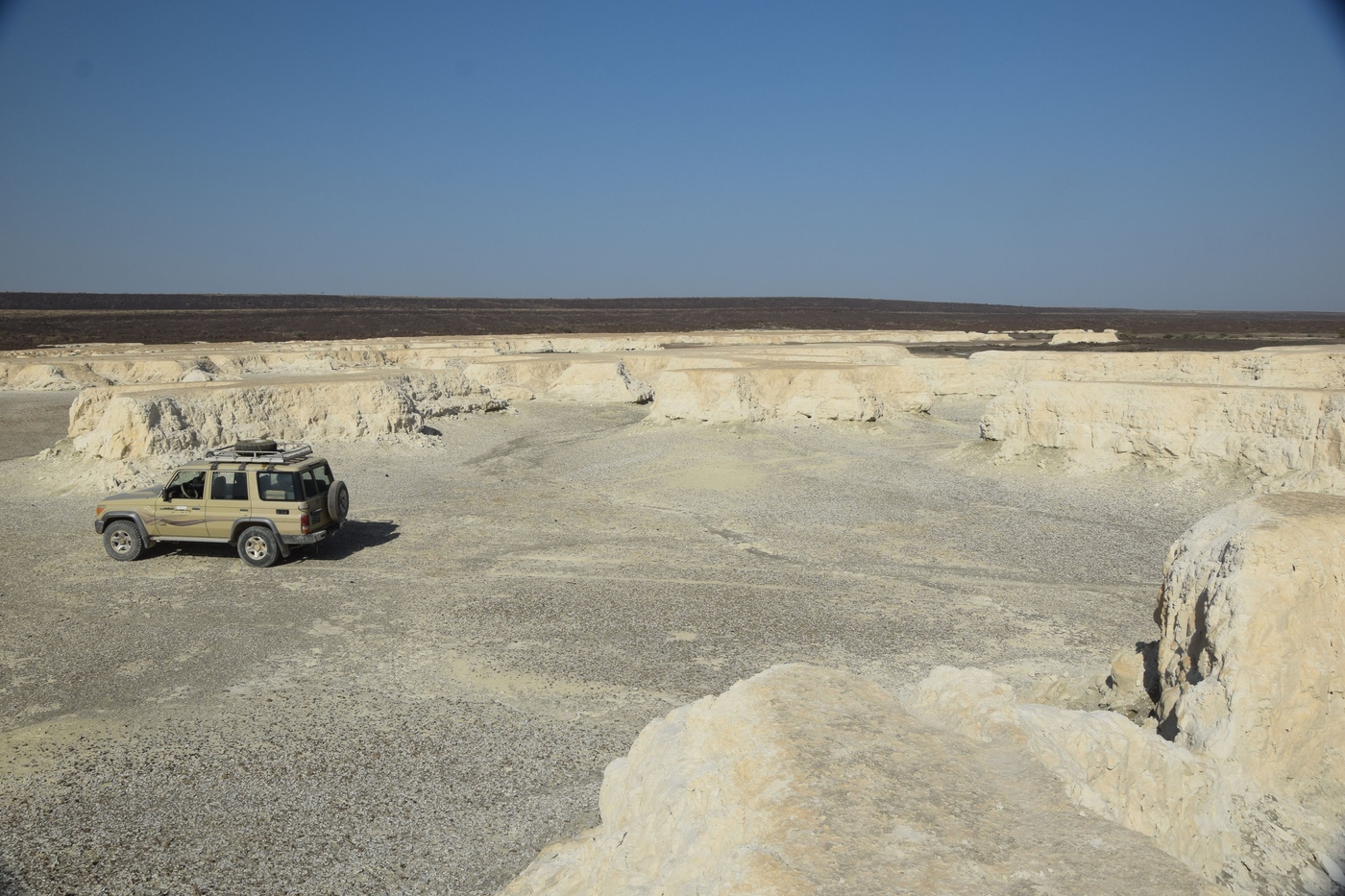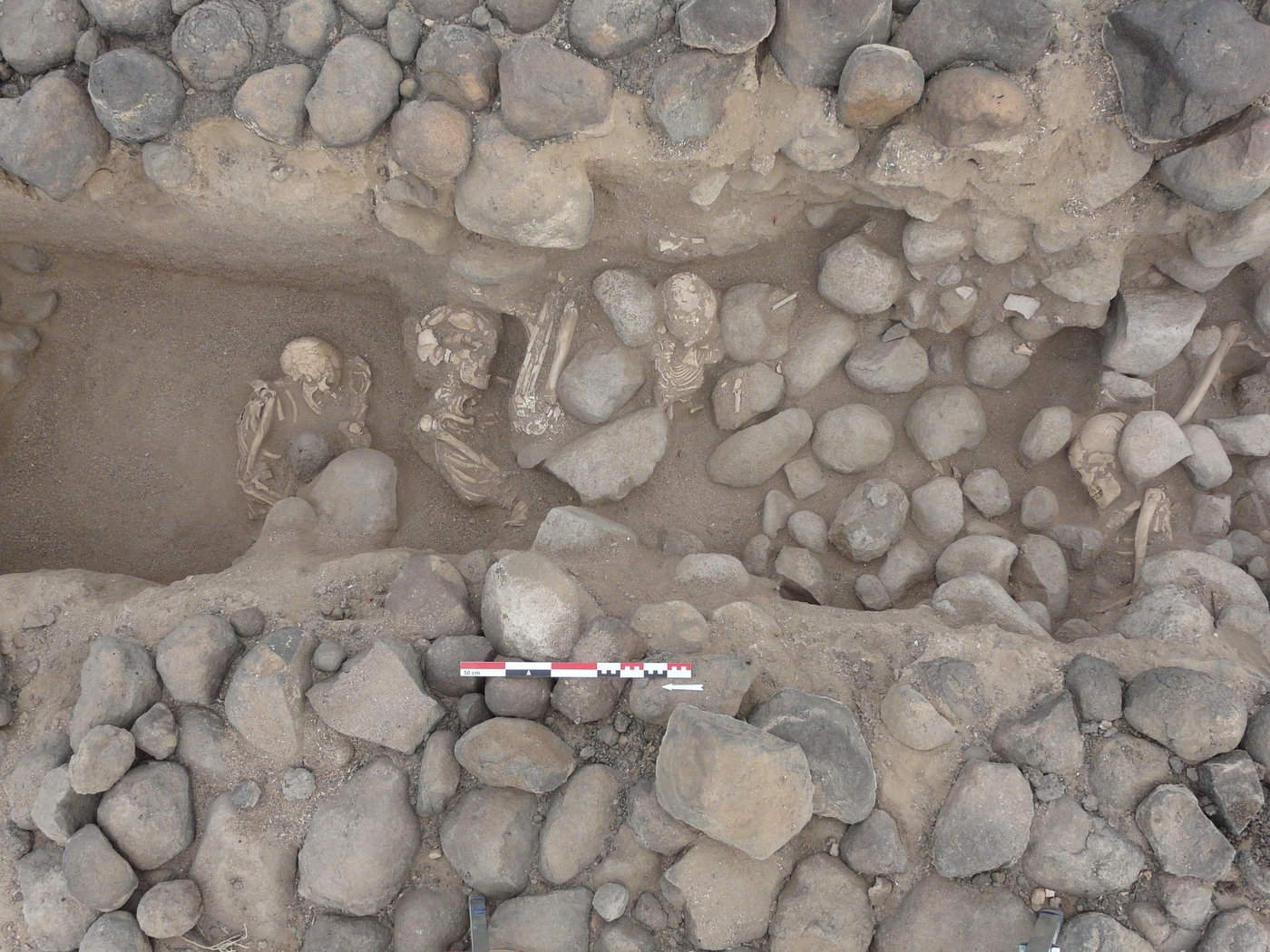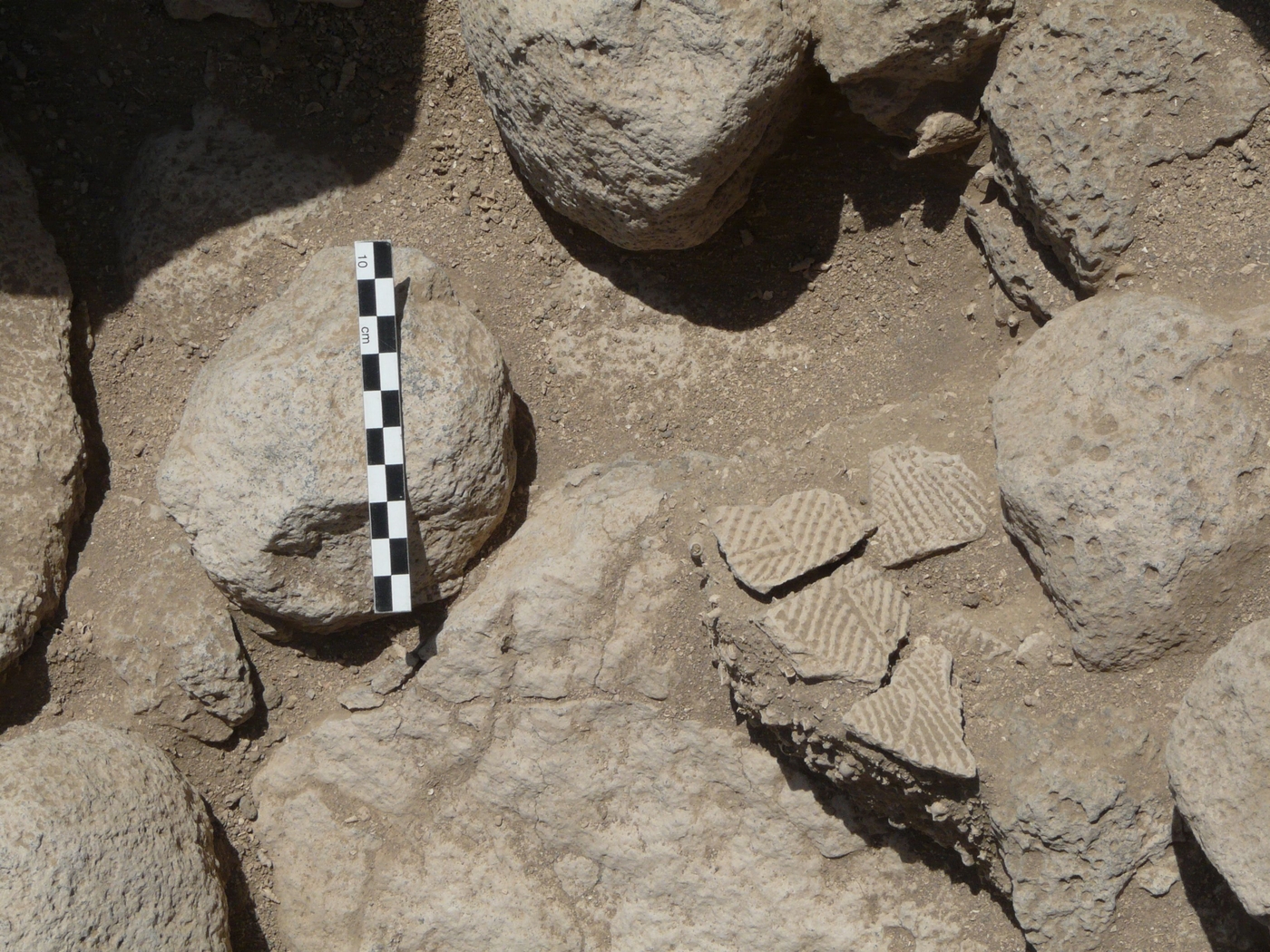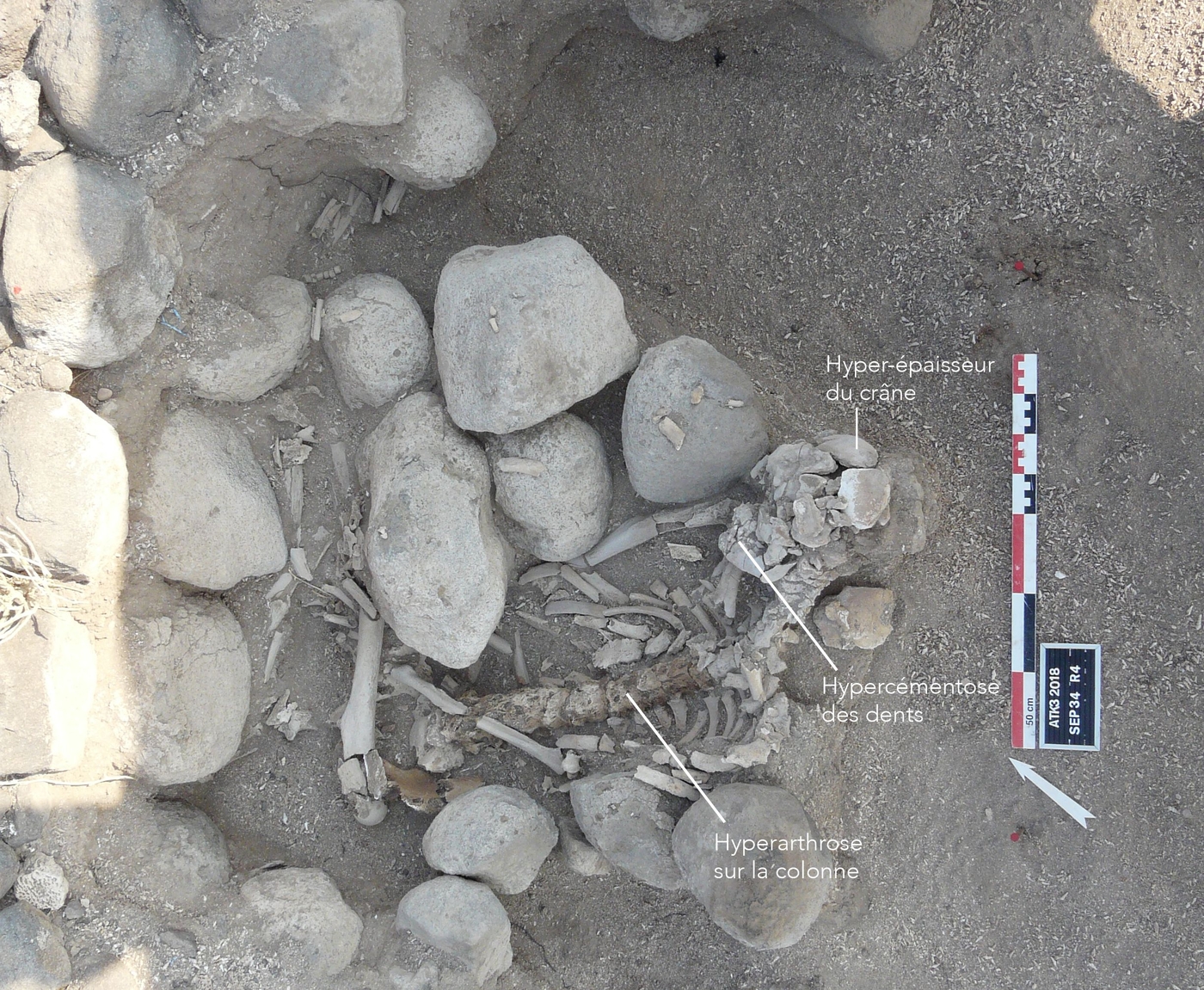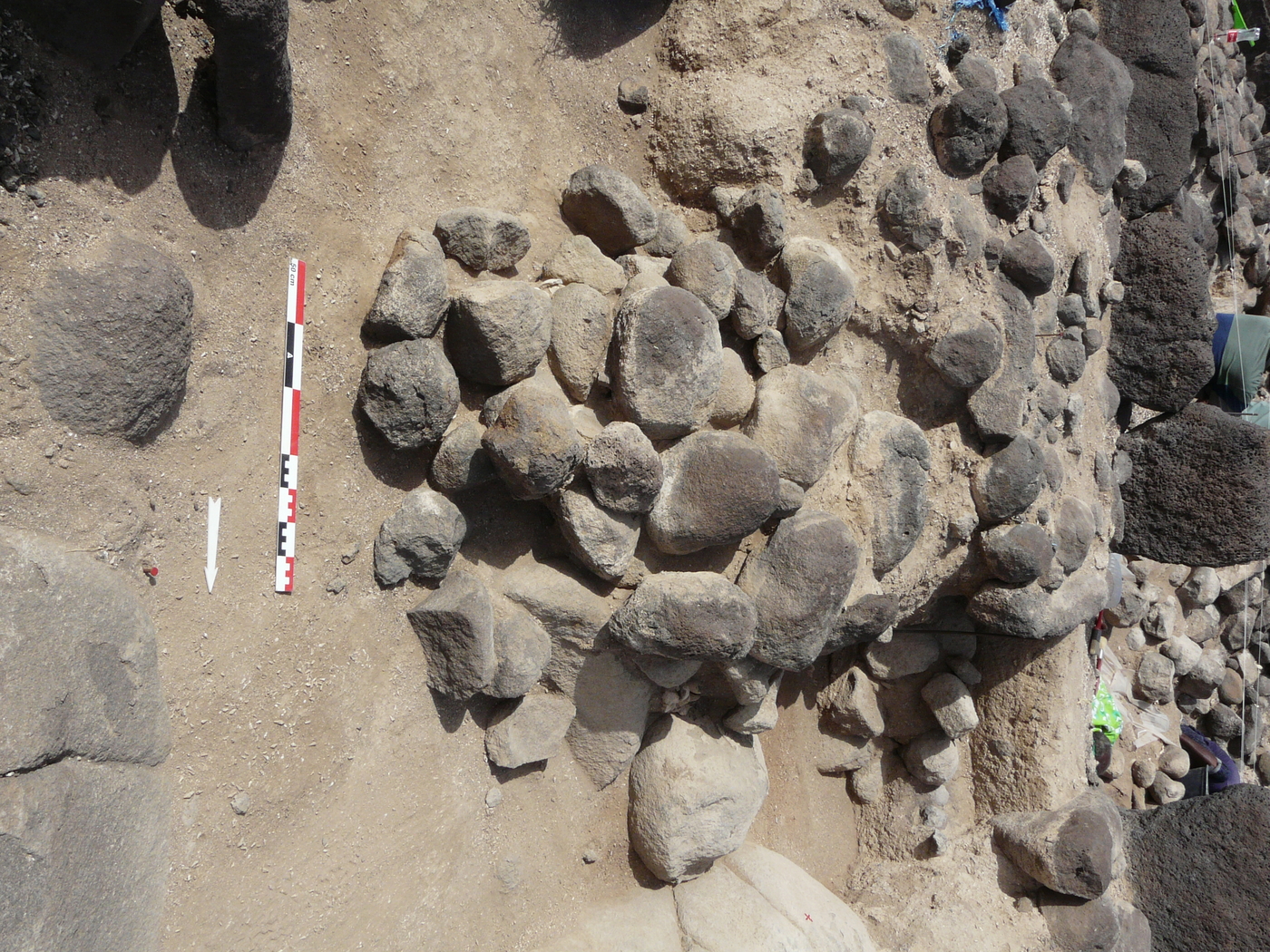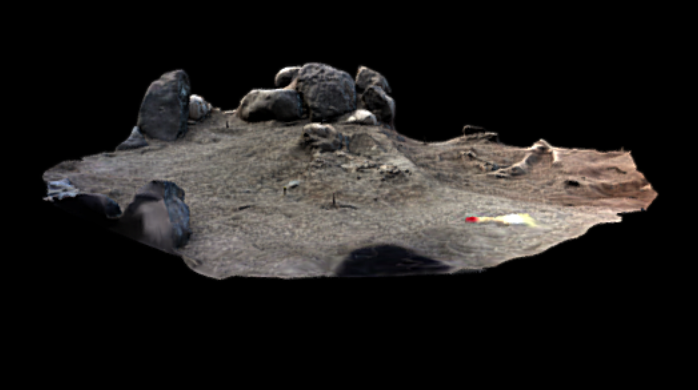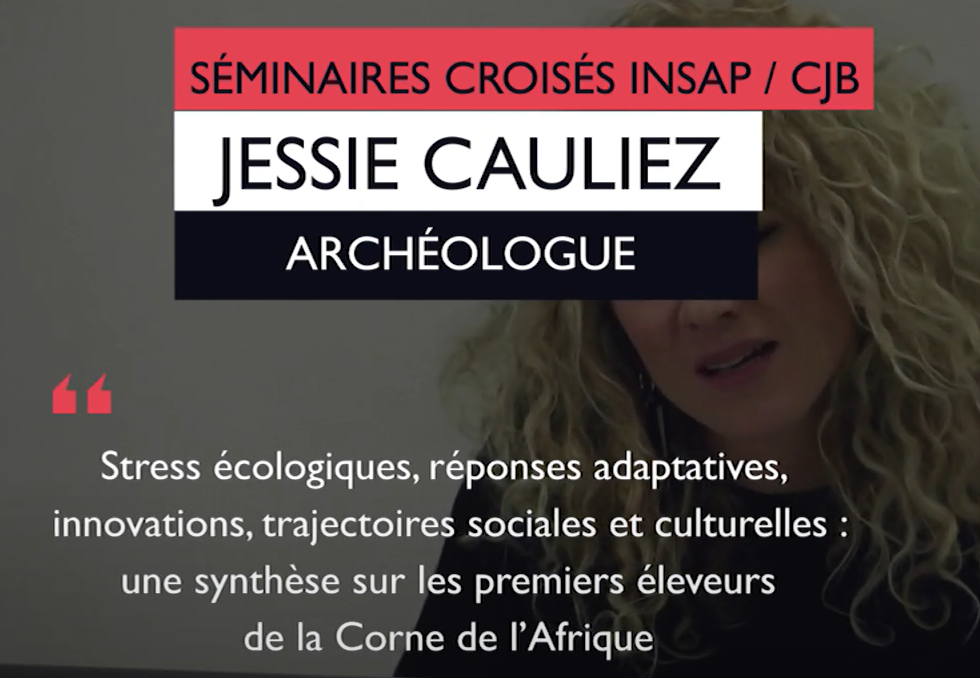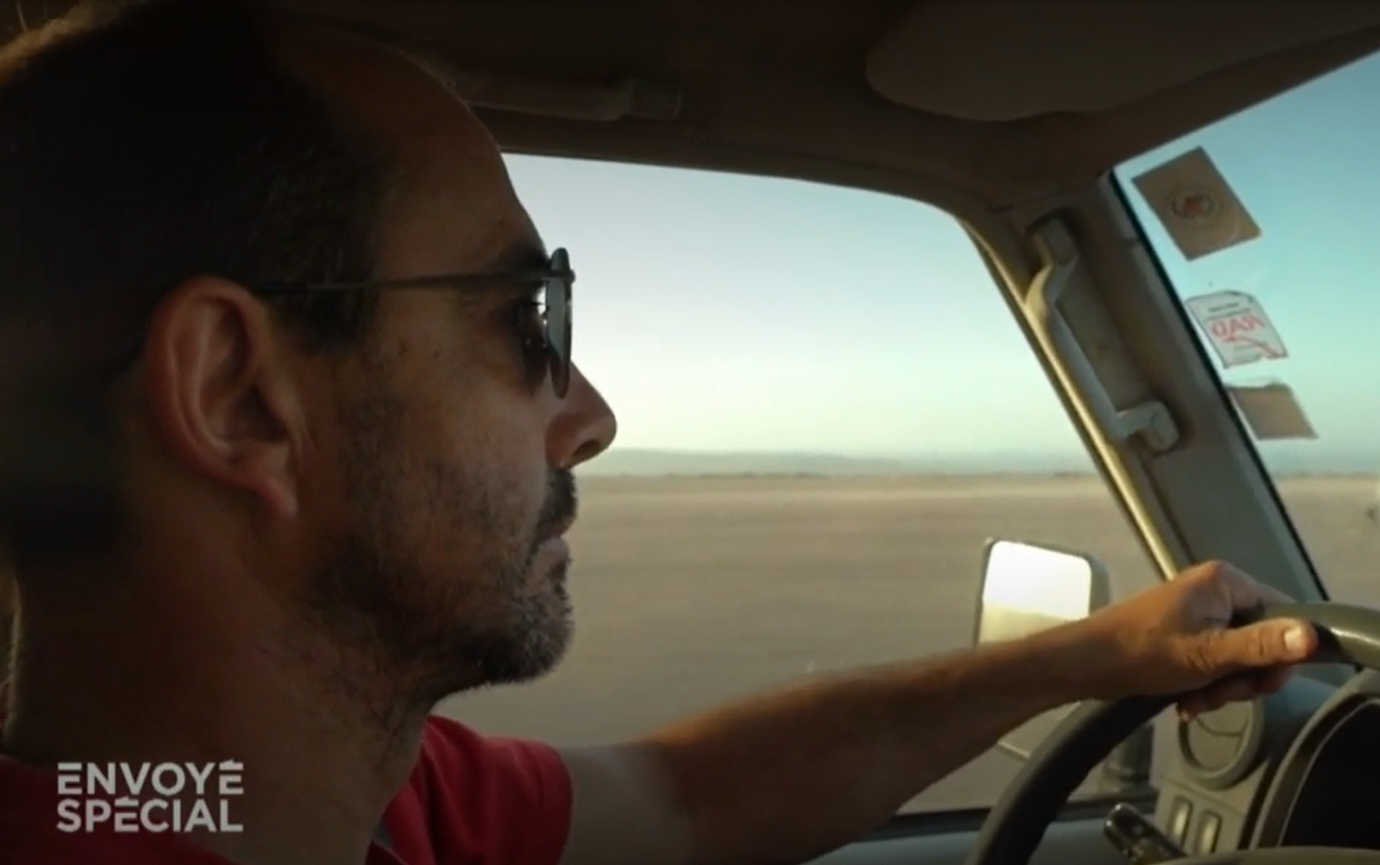The World of the Dead of the first livestock breeders
In 2006, archaeologists were led by one of their Djiboutian colleagues to an impressive circular basalt platform. Here, they found bones and ceramic ware similar to pottery associated with the region’s first livestock breeders. Is this site their necropolis?
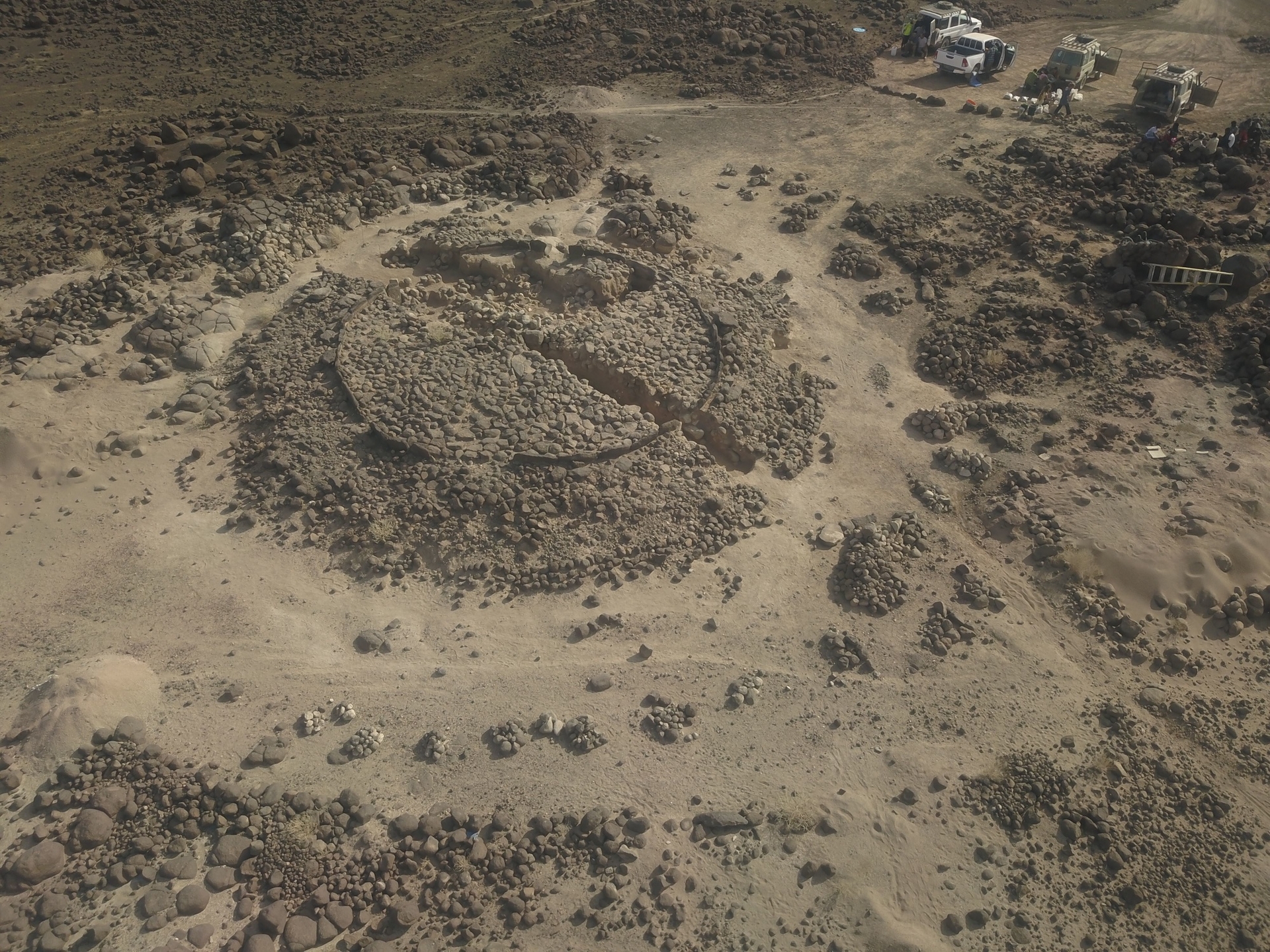
The region’s first monumental burial sites
When the water levels in Lake Abbe dropped significantly due to aridification in the mid-3rd millennium BCE, the communities who had until then survived on fishing, hunting and gathering introduced cattle and goat husbandry into their diets. These first livestock breeders lived in seasonal habitats, like Asa Koma, and built the region’s first monumental collective burial areas.
A large necropolis
The Antakari 3 site is situated at height on basalt glacises. This necropolis contains the remains of some 300 individuals who were buried following the same procedure: each person was placed in a pit dug into a sand mound; the pit was then sealed with a cover of basalt blocks. Once the necropolis was no longer in use, it was paved with basalt blocks surrounded by a double crown, the first composed of dressed slabs, the second with rounded blocks, forming a large circular platform 17 metres in diameter.
This necropolis required a significant technical and logistical effort to complete. Where there was no pre-existing natural sediment on the basalt, users had to transport a quantity of sand estimated at 250 tonnes to create an artificial mound to accommodate the ditch burials. The closest lacustrine outcrops containing these sands are situated in the lowest part of the basin, more than 400 metres below the site.
Richly decorated bodies
Richly decorated pottery was placed with the bodies of the deceased. The wrists and ankles of the deceased were adorned with beads made from ostrich eggshell, basalt and carnelian; pendants in bone and shell from the Red Sea were found around their necks.
A commemorative and demonstrative monument
This type of monument has several functions: to commemorate and to demonstrate political power or power through wealth in an environment notorious for the way in which certain individuals competed for prestige. A dozen monuments of this type have been found in the immediate vicinity.
About the mission
The Premières Sociétés de Production dans la Corne de l’Afrique mission (French Ministry for Europe and Foreign Affairs and IRAH in Djibouti) has been directed since 2013 by J. Cauliez (CNRS, UMR 5608 Toulouse). It was created in 1984 by R. Joussaume and led from 2001 to 2013 by X. Gutherz.
The project is supported by the French Ministry for Europe and Foreign Affairs on the advice of the Excavations Board (Commission des fouilles).
The mission’s other sites:
Useful links
- Presentation of the mission on the website of the Laboratoire Traces UMR 5608 – Toulouse
- The mission has been awarded the SEEG label: Global ecology study sites or SEEG (CNRS – INEE programme)
- Mission implemented under an agreement with the Centre Français des Études Ethiopiennes IFRE 23 – USR 3127, Addis Ababa, Ethiopia
- Mission implemented in partnership with the Institut des Déserts et des Steppes
- Sponsorship


